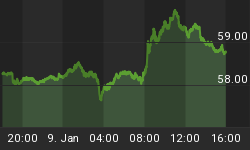Below is an excerpt from a commentary originally posted at www.speculative-investor.com on 14th March, 2010.
Interest rates trended upward during the gold bull market of the 1970s in parallel with a generally high level of inflation fear, leading to the belief in some quarters that gold bull markets always go hand-in-hand with rising interest rates and inflation expectations. However, this belief was proved wrong over the past decade in that gold trended upward while interest rates and inflation expectations either oscillated near 40-year lows or had a downward bias. It was a strange decade in that confidence in the major currencies was clearly on the decline (as indicated by gold's performance), and yet inflation expectations remained at relatively low levels throughout.
As suggested by gold's ability to trend upward in the face of rising interest rates during the 1970s and its ability to trend upward in the face of stable/falling interest rates during the 2000s, the nominal interest rate trend is not an important driver of the gold price. Rather than being influenced by nominal interest rate changes, gold is influenced by changes in REAL short-term interest rates and interest-rate spreads. Specifically, low or falling real short-term interest rates are bullish for gold, because they mean that monetary policy is easy or becoming easier (regardless of what the central bank happens to be doing). An expanding spread between long-term and short-term interest rates (a 'steepening' yield curve) is also bullish, as is a general expansion of credit spreads.
To illustrate the influence that the spread between long-term and shorter-term interest rates has on gold's relative strength, we present, below, a chart comparing the gold/GYX ratio (gold relative to a basket of industrial metals) with the TNX/FVX ratio (the 10-year yield divided by the 5-year yield, a representation of the yield spread).

The reason that a large increase in the yield-spread (a pronounced 'steepening' of the yield curve) tends to be bullish for gold is that it indicates either rising inflation expectations (if the yield-spread is being driven upward by rising long-term interest rates) or falling financial-market liquidity (if the yield-spread is being driven upward by falling short-term interest rates). The large increases in the yield-spread that occurred over the past decade were driven by falling financial-market liquidity; or, to put it another way, by increasing risk aversion.
We aren't offering a free trial subscription at this time, but free samples of our work (excerpts from our regular commentaries) can be viewed at: http://www.speculative-investor.com/new/freesamples.html















